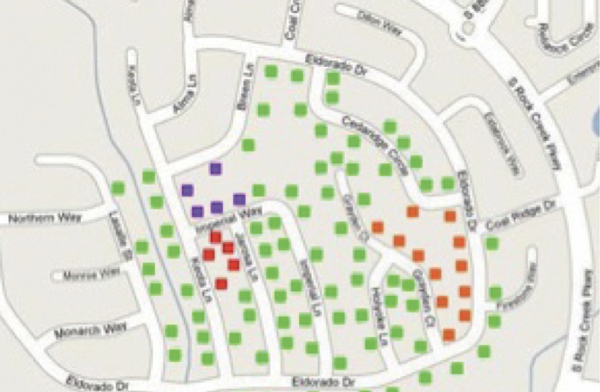An Introduction to PNM
By Ron Hranac
An Introduction to PNM
Linear distortions—micro-reflections, amplitude ripple/tilt, and group delay distortion—wreak havoc upon the digital signals carried in our cable networks, causing inter-symbol interference (ISI), degraded modulation error ratio (MER), and if severe enough, packet loss.
Troubleshooting linear distortions usually requires specialized test equipment.
What if you could identify and locate the sources of linear distortions in the field using your existing cable modem termination system (CMTS) and cable modems? Given the large number of Data-Over-Cable Service Interface Specifications (DOCSIS) devices that have been deployed by cable operators, why not take advantage of those devices for outside plant and subscriber drop troubleshooting?
During SCTE·ISBE’s 2008 Cable-Tec Expo in Philadelphia, CableLabs’ Alberto Campos, Eduardo Cardona, and Lakshmi Raman presented a paper titled “Pre-equalization Based Pro-Active Network Maintenance Methodology.” The authors proposed using cable modem upstream transmitter adaptive pre-equalizer coefficients to detect and localize plant impairments.

Figure 1. In-channel frequency response (right) derived from a cable modem’s upstream pre-equalization coefficients. Note the presence of amplitude ripple (standing waves) in the in-channel response, caused by a micro-reflection. Graphic courtesy of Comcast.
The basic idea involves (1) deriving complex frequency response signatures from modem pre-equalization coefficients (see Figure 1), (2) looking for response signatures indicative of the presence of linear distortions, and (3) overlaying affected modem location information (from the cable company’s customer database) on a system topology display of some sort—for instance, digitized outside plant maps (see Figure 2).
Figure 2. Cable modems with common response impairment signatures are represented by different colors. For example, red might be one impairment, purple another, and so on. Green indicates modems that are operating normally. Graphic courtesy of Comcast.
In 2009 CableLabs formed a proactive network maintenance (PNM) working group—now called the InGeNeOs Working Group—to implement the ideas presented in the Expo ’08 paper. The output of the working group’s efforts was a best practices document published by CableLabs in 2010, followed by a reference implementation. The PNM best practices document, now in its third version, can be downloaded at https://specification-search.cablelabs.com/?query=&category=DOCSIS&subcat=NETWORK%20MAINTENANCE&doctype=Guidelines&content=false&archives=false¤tPage=1
(The PNM reference implementation has, as expected, evolved over time. Interested members and vendors should contact CableLabs for more information.)
Using the CableLabs PNM best practices recommendations and perhaps also the PNM reference implementation, cable operators or third parties can create their own software-based PNM application.
Comcast took the lead early on and created a PNM application called “Scout Flux,” and other operators have developed or are developing their own versions. PNM applications, which run on a separate server, obtain cable modem transmit pre-equalization coefficient data and the CMTS’s upstream adaptive equalizer coefficient data using simple network management protocol (SNMP) or similar. The application then processes the coefficients to produce various graphical displays, overlay the results on maps, and so forth.
Over the years early versions of PNM applications have been enhanced with, among other things, the addition of RF spectrum data from full band capture (FBC) capable cable modems. FBC provides technicians with the equivalent of a spectrum analyzer in every home equipped with an FBC capable modem, allowing identification of impairments such as ingress, suckouts, excessive tilt or roll-off, standing waves, and even the presence of data-only filters.
When the DOCSIS 3.1 specification was being developed, it was decided to include PNM in the spec. Section 9 of the DOCSIS 3.1 Physical Layer Specification is dedicated entirely to PNM, and defines a number of valuable tools that can help cable operators troubleshoot and maintain their networks.
An effective PNM program can help operators detect and locate faults before rolling trucks, and do such things as perform trend analysis to predict future faults before they happen. Does it work? Absolutely! Operators that have deployed and are using PNM have enjoyed improvements in plant quality and long-term reductions in opex. This issue of Broadband Library includes several articles about PNM. Read on to learn more about PNM and how it can help you and your system.
 Ron Hranac
Ron Hranac
Technical Marketing Engineer,
Cisco Systems
Ron Hranac, a 46-year veteran of the cable industry, is TME for Cisco’s Cable Access Business Unit. A Fellow Member of SCTE, Ron was inducted into the Society’s Hall of Fame in 2010, is a co-recipient of the Chairman’s Award, an SCTE Member of the Year, and is a member of the Cable TV Pioneers Class of ’97. He received the Society’s Excellence in Standards award at Cable-Tec Expo 2016. He has published hundreds of articles and papers, and has been a speaker at numerous international, national, regional, and local conferences and seminars.




